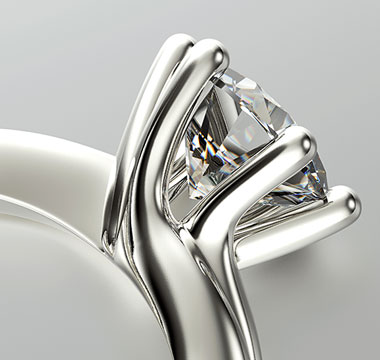
How is yellow gold made white?
Gold in its pure, 24k form is very yellow and very soft. It is also flakey, brittle and very difficult to work with. Even in ancient times, gold was alloyed with powdered malachite (which contains copper) or silver to make it malleable.
These days, gold is alloyed with all different kinds of metal to make it all of the colors you see today. Copper alloyed with gold turns it pink. Zinc makes gold green. Brass keeps it a bright yellow color. Nickel and tin are used to make yellow gold white. The new trend in white gold is to alloy it with a proprietary stainless steel blend so it is very hard, scratch resistant and stays white without plating.
Ninety-eight (98) percent of the white gold you see today, though, is alloyed with nickel and tin. When nickel and tin oxidize, they leave behind the yellow gold and the piece turns a “beige-ish” color that makes it look a color somewhere in between yellow and white gold. To combat that problem, the jewelry industry rhodium plates ALL white gold jewelry so it will maintain its bright white color.
Rhodium is a hard white metal used to alloy platinum and its molecular structure makes it very suitable for use in the plating process. The rhodium is diluted in a plating solution and an electrical current is run through that solution while the piece is suspended from a platinum hook. The rhodium is deposited in a micro thin layer and it will keep your jewelry bright and white.
We recommend you let us re-rhodium plate your jewelry after we finish your repair. The rhodium plating is buffed off in the finishing process of the repair and needs to be reapplied. We rhodium plate your piece to ensure your jewelry will remain looking its showroom best.
We also recommend you let us polish, inspect and re-rhodium plate your ring annually. It’s just like changing the oil in your car. This process greatly extends the life and quality of your jewelry.

